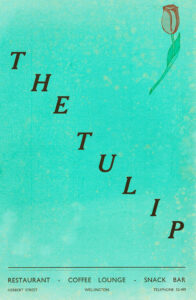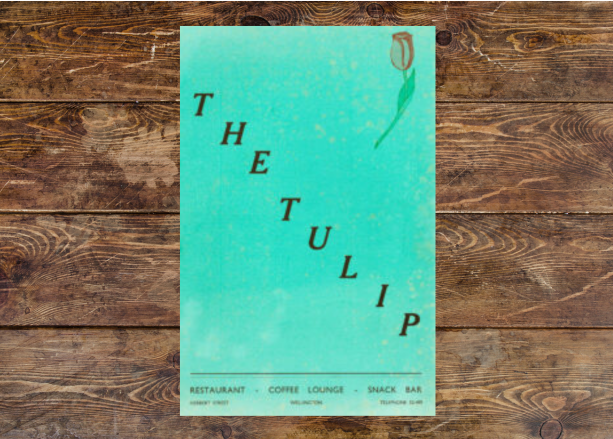In the late 1950s, a pioneering restaurant helped introduce Wellingtonians to ‘fine dining’ but faced the absurdity of New Zealand’s antiquated liquor laws

In 1951 Boyd Klap arrived in New Zealand as a Dutch migrant in his early 20s with his wife and brother. They were among the first of a wave of immigrants from the Netherlands who moved to New Zealand during the 1950s and 1960s. He soon realised that his specialised skills in tropical agriculture which had been honed during his term of military service in the Dutch East Indies were to be of little use in New Zealand and he began what was to become a life-long career in the insurance industry. Many European migrant groups formed societies and associations during this period and one of the largest of these was the Wellington Dutch Club and Boyd was soon involved with its administration. The club was not only a social gathering point but also went a small way to try and replicate elements of the hospitality scene of Europe that were lacking in New Zealand. Wellington at the time had few such options: restaurants served basic grills & roasts and serving alcohol was prohibited. Coffee and wine were virtually unobtainable (tea and beer were the dominant drinks) while pubs closed at 6pm after which the city emptied out.
In an effort to shake up the scene, in 1958 Boyd and several other members of the Dutch Club decided to establish their own European-style restaurant so that Wellingtonians could enjoy fine food in a convivial setting enjoyed over several hours. This would be a big change from the dominant dining culture of the time where customers were often seated in cubicles with proprietors trying to pump people through as fast as possible. A company was formed called Holland House Ltd to help establish the restaurant and shares were sold among the local Dutch community. Jacques van Raalte (founder of the ‘Ralta’ brand of NZ manufactured domestic electrical appliances) and Allan Highet (WCC Councillor and later Cabinet Minister) were among those appointed as directors and a name was chosen that would reflect its cultural origins, The Tulip. A lease was taken on a first floor tenancy in a building in Herbert Street (later incorporated into Victoria Street between Manners and Dixon streets) and work soon began to build a commercial kitchen, fit-out the dining area and acquire all the necessary furniture, crockery and utensils.

With a fortuitous stroke of luck, Boyd heard that there was a young French-speaking Swiss migrant working on the Wellington docks as a ‘wharfie’ who was actually a trained chef. He was tracked down and approached and he quickly agreed to join the Tulip team. His name was Pierre Meyer and in time he would become a legend of the local restaurant scene with his eponymous restaurant, Pierre’s. With his culinary and cultural background, despite the restaurant’s Dutch theme, the cuisine served was primarily French though a small number of traditional Dutch dishes such as Croquettes Hollandaise were included. A grand opening night was held in early 1959 with the mayor Frank Kitts officially opening the establishment and over the subsequent months, many Wellingtonians had their first experience of ‘fine dining’.

However, one traditional element of the experience was missing; the opportunity to enjoy a glass of wine with your meal. Small scale wine production was happening in New Zealand (Lebanese and Dalmatian migrants had been pioneers in viticulture and wine production) but it was impossible to get a liquor licence which would allow a restaurant to legally sell alcohol. Years of lobbying by New Zealand’s two main brewing conglomerates had resulted in a duopoly that controlled the on-licence sale of liquor through their pubs and hotels – a position they were unwilling to sacrifice and which they were prepared to defend at all costs. In response, The Tulip started to quietly allow customers to bring their own bottle of wine but it wasn’t too long before the word spread of what was going on.

On the evening of Saturday 13th June 1959, police constables simultaneously raided Wellington’s three premier restaurants in search of alcohol; the Café du Boulevard in Victoria Street, Orsini’s in Cuba Street…and The Tulip. All wine was seized (including cooking wine), staff were detained and customers were forced to give their names and addresses before hurriedly exiting at what was the busiest dining period of the week. To some extent the police agreed that the licensing rules were an absurdity and no charges were pressed (possibly because of the number of foreign diplomats present that night). The restaurants seized the opportunity to exploit the publicity surrounding the raids and combined forces to place a large advertisement in the Evening Post. Some months later a pair of undercover police officers posing as a married couple attended the restaurant and purchased a carafe of wine from the restaurant manager who had begun to make illicit alcohol sales without the knowledge of Boyd or the board of directors. Duly ‘busted’, the manager was soon in court where the Crown prosecutor presented the damning evidence of a service chit on which was written “1 wine”. His defence lawyer countered with an explanation: all of the staff were European ‘continentals’, this was merely an abbreviation to indicate 1 wiener [schnitzel]. Though it got a burst of laughter from the court, and even the judge was amused, he wasn’t buying it and a conviction and fine were forthcoming.

Thankfully, legislative changes were just around the corner and amendments were finally made to the Sale of Liquor Act which opened a path for restaurants to obtain a licence to sell alcohol, the newly-opened Le Normandie being the first in Wellington to do so in 1961. Many other restaurants applied for the easier-to-obtain ‘B.Y.O’ licence which saw the arrival of ‘corkage’ fees on restaurant menus. However, obtaining a liquor licence required a restaurant to reach near-absurd standards relating to restaurant access, background checks for employees and the provision of separate male & female toilet cubicles both for customers and for staff. If a separate female staff-only toilet could not be provided, no women could be employed. Knowing that their upper-floor tenancy would never be able to reach these standards without huge investment and facing competition from restaurants who could, with a degree of reluctance Boyd and the board of directors of Holland House decided to close the restaurant in the early 1960s and the brief flowering of The Tulip came to an end.
You can hear an oral history interview with Boyd Klap and view other material relating to The Tulip by clicking on the following link.
Wellington City Libraries wishes to thank and acknowledge Boyd Klap for his help in providing information and material relating to the establishment of The Tulip.


